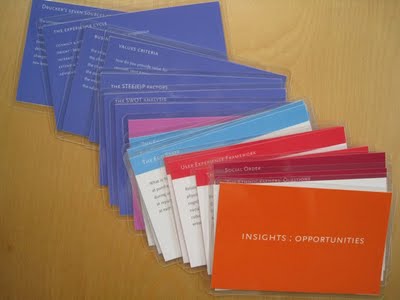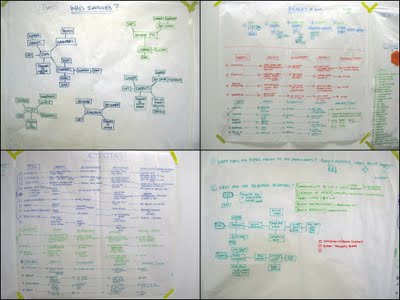IDSA Educators' Papers On Line!
 Monday, July 2, 2012 at 1:08PM
Monday, July 2, 2012 at 1:08PM I may be revealing my geek side here, but as a past IDSA Education VP (and as such, responsible for putting on two educators' conferences and overseeing the peer review process of the content) I am thrilled to see IDSA's new gallery of educators' papers on line. I've attended these conferences for years and perhaps the best-kept secret in the design world is the IDSA National Education Symposium. Every year I hear something that directly helps either my professional or teaching practice. On the "big stage" of the IDSA National Conference we might see showy keynotes from well-known figures (and if they're designers, that might be a show of their portfolio, and while I'm not complaining, this can be a little ho-hum and nothing-new-here, I'm just sayin'...). The real depth and weight can often be found in the educators' sessions, but these are thinly attended by the main audience.
Is there a misconception about design education? Perhaps. For as long as I can remember, professional practitioners have complained that design education is slipping, ineffectual, just not preparing students for the so-called "real world." This used to bother me. From my perspective, teaching at Art Center and every year looking at the work of students and educators at schools like Cincinnati, CCS, San Jose State and CCA, I see the opposite. I was told by educators older and wiser than I that this is typical of many designers - the minute they graduate they start complaining that design education isn't the way it used to be when they were in school. To these folks, I'd like to suggest that they visit one of the aforementioned schools and subject themselves to today's packed-full curriculum. The longer they've been out of school, I'd suggest they'd find greater difficulty in handling everything that we ask of students today in these programs.
The heart of the problem might be that most designers don't see the best portfolios. The A students usually have jobs before they leave school. The next rung of students look around a bit, show their work to a few offices, and then get hired. It's the C students - and, unfortunately, graduates of weaker programs - who travel all points of the compass showing their work to everyone, and finding great difficulty getting hired. It is these portfolios that most people see.
There's another truth that might be harsher for practitioners to swallow - the really good students rarely apply to the weaker offices. If your office has a reputation for being a terrible place to work, odds are that there is a parallel universe of great design portfolios that you've never seen. Think that one through before you are tempted to go off about all design education.
End of rant. Back to the educators' papers online at IDSA.
Most of the time, regular attendees of the IDSA National Conference shun the educators' sessions like kids avoiding vegetables. (Could it be connected to the bad view of design education I mention above? Who knows?) But the secret (every parent knows) is to make the educator sessions (and the vegetables) indistinguishable from the regular fare. The last educators' conference I chaired was in Austin, where we experimented with integrating the educators' presentations seamlessly with the rest of the conference. I remember asking someone with a practitioner's badge whether he'd had a chance to check out any of the educators' sessions yet. He gave me a guilty look and mumbled something about needing to go to sessions that had relevance to his work. I said, "That's ok - don't worry about it. By the way, of all the sessions, which have you liked best so far?" He brightened, and named one of the educators' sessions that he'd attended, thinking it was a "regular" session. Touché.
These papers are all archived at the national office, and in the past were intermittently and incompletely available on the web site. I am so glad to see this resource in entirety, finally accessible.
My congratulations to Kurt Howard, Ben Chisholm, and Colleen Browning, the unsung heros of IDSA's national office staff who are, bit by bit, adding gems like this to the IDSA site. Good job, folks!
 Katherine Bennett | Comments Off |
Katherine Bennett | Comments Off |  IDSA,
IDSA,  conference,
conference,  design education,
design education,  pedagogy
pedagogy 









